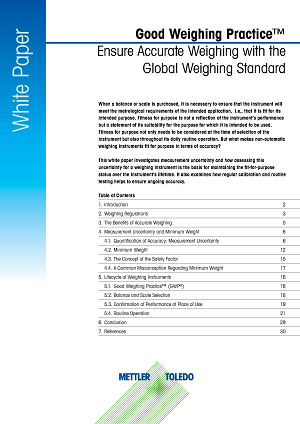The consequences of handling test weights incorrectly
If test weights are handled improperly or if test weights are used that are not suitable for the balance to be tested, considerable weighing errors may occur. For example, skin oils, dirt and changing ambient temperatures can affect weight accuracy. The percentage mass variation becomes particularly critical when using small weights or working with tight tolerances. If these issues are not addressed, operators may conduct tests with inaccurate weights, resulting in weighing errors as well as unnecessary costs associated with rework, waste disposal, and product recall.
Tips for correct test weight handling
Our essential guide from METTLER TOLEDO contains 12 practical tips and tricks on how to handle, clean and store weights. Learn about the measures you can take to ensure the accuracy of your reference weights in the long-term.









